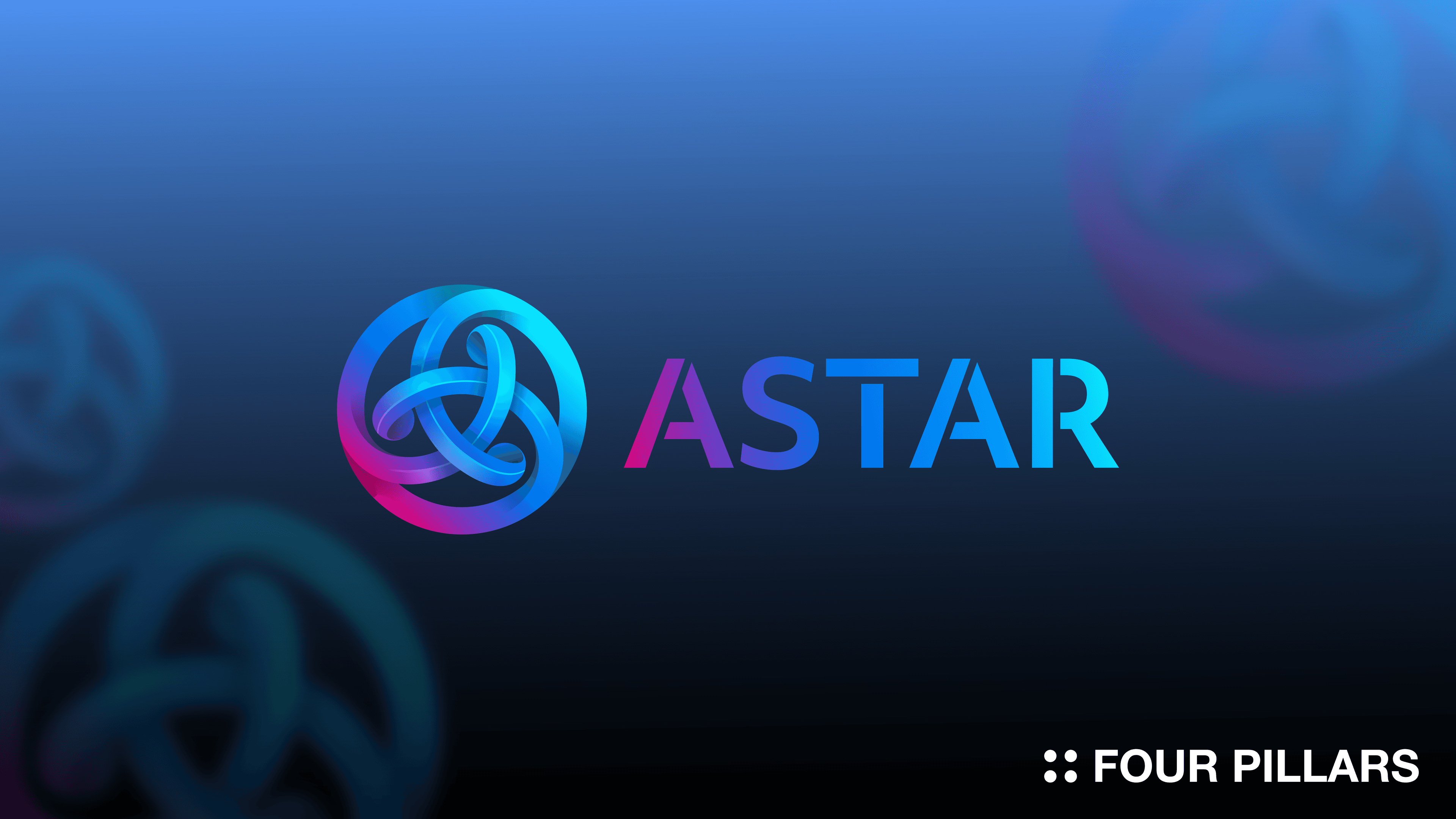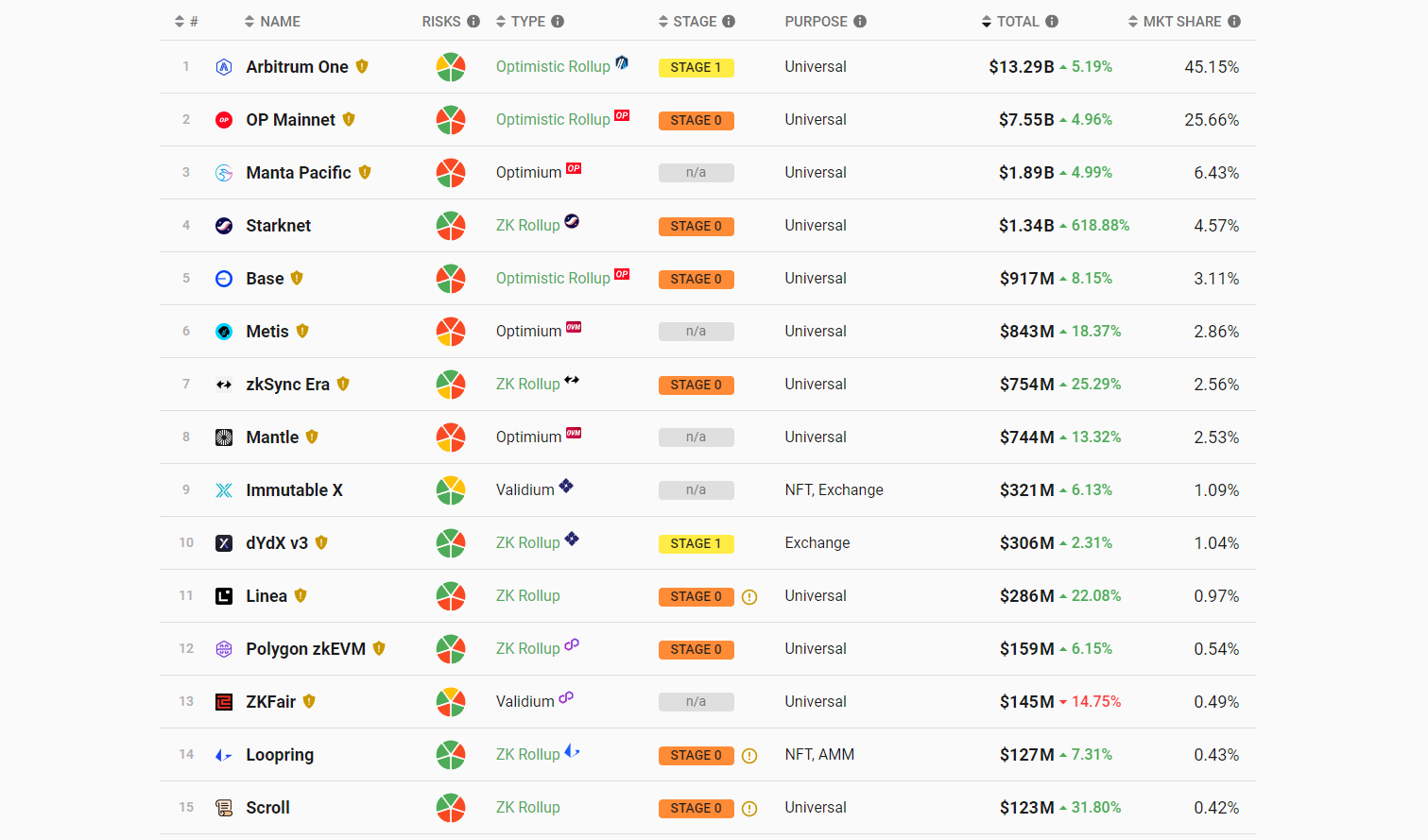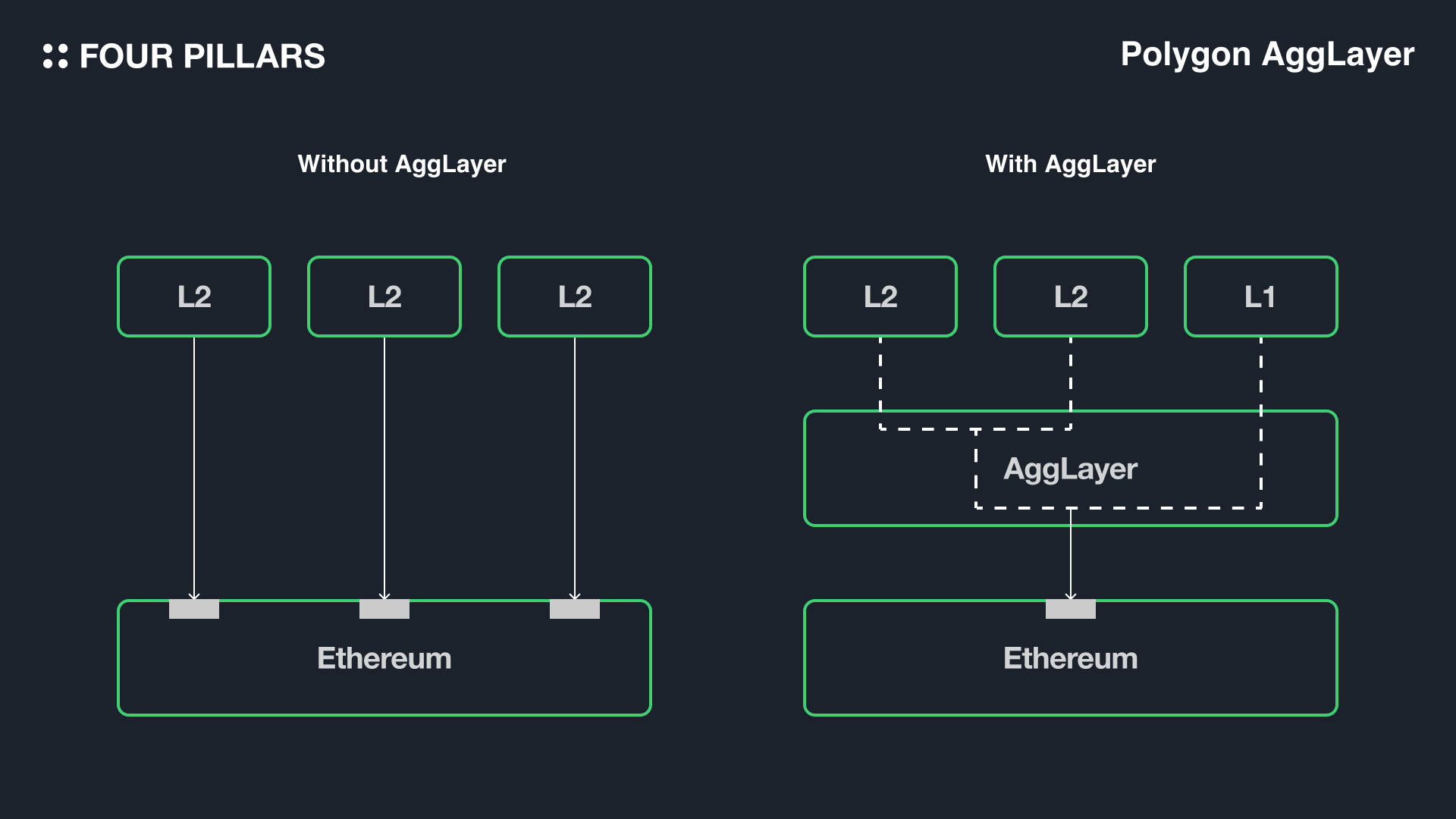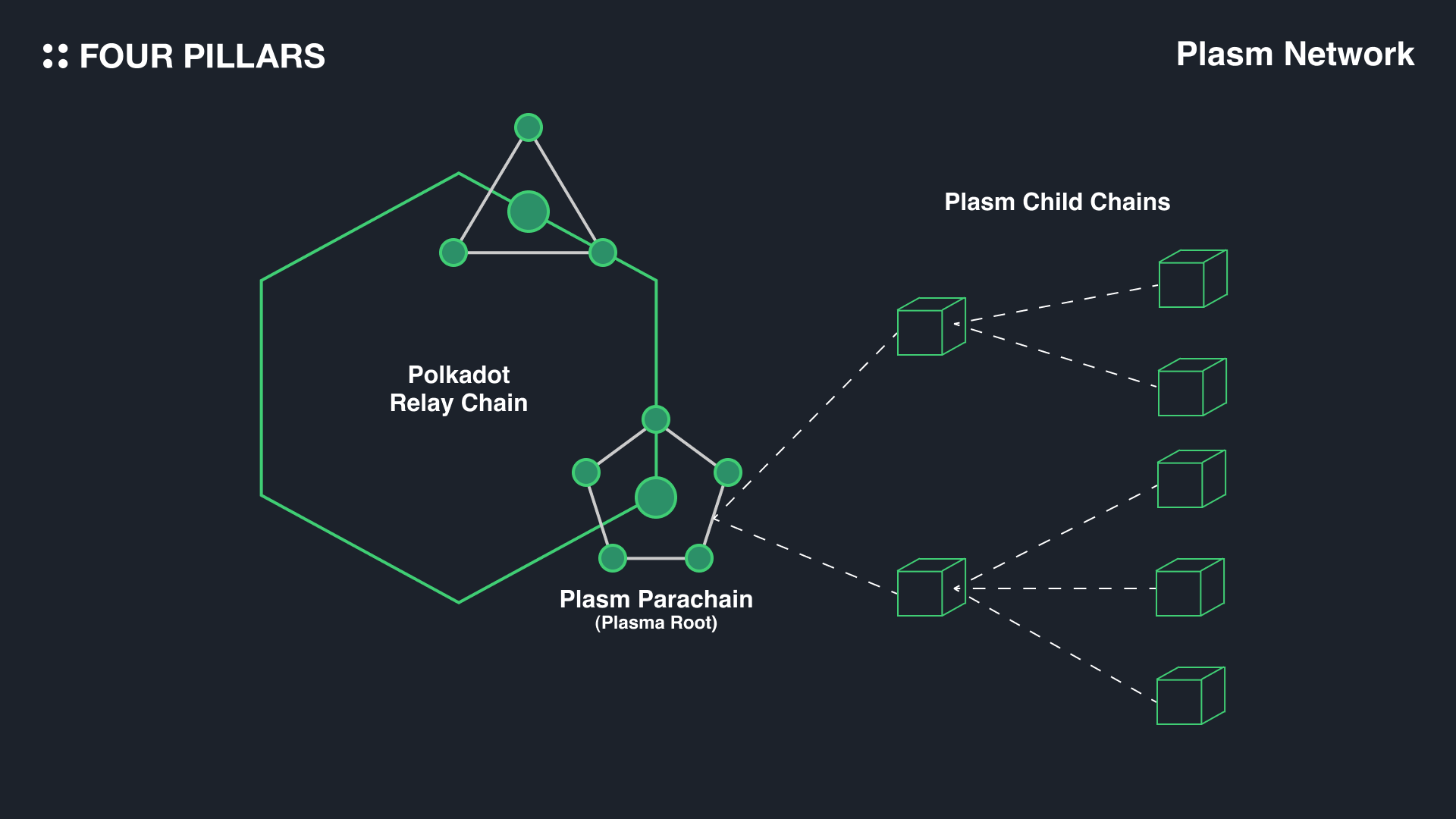
From a long-term perspective, the advantages of zk rollups over optimistic rollups lie in 1) scalability related to data availability and 2) interoperability between multiple layer 2 solutions.
Astar has continuously researched scalability solutions since its days as Plasm Network and has collaborated with various companies and cities in Japan from a business standpoint.
Leveraging its technical and business strengths, Astar plans to expand into a multi-chain and global ecosystem through Astar zkEVM, which is the first network integrated to Polygon’s AggLayer.
It has been over eight years since the Ethereum network was launched. During this time, Ethereum has seen remarkable growth both technically and in its ecosystem, maintaining its position as the leading smart contract platform. However, due to its emphasis on decentralization, Ethereum's low scalability has hindered user participation. As a response, Vitalik Buterin introduced a rollup-centric roadmap, suggesting that Ethereum remains a neutral data layer while users interact with various rollup networks.
In the rollup-centric Ethereum ecosystem, optimistic rollups were among the first to achieve rapid growth. They store transaction data on the Ethereum network, inheriting its robust security, and initially assume all transactions are valid for quick processing, later verifying validity through a fraud proof process. Due to their relative simplicity compared to zk-rollups, many optimistic rollup ecosystems grew quickly, with Optimism and Arbitrum as representative examples. They have expanded beyond single ecosystems, introducing L2 SDKs like OP-Stack and Arbitrum Orbit.
Unlike optimistic rollups, zk rollups verify the validity of all transactions through validity proof. Thanks to the properties of zero-knowledge proofs (zkp), zk rollups don't need to store all transaction data on the Ethereum network, only state diff., offering scalability advantages in data availability compared to optimistic rollups.
The development of the zk rollup ecosystem has been gradual primarily due to the complexities involved in producing zkp for general-purpose computations. The EVM inherently lacks the capability to create zkp for its transactions. Consequently, the creation of a versatile zk-rollup solution necessitates the establishment of a distinct virtual machine (zkVM) designed specifically to generate zkp for its computational outcomes. Projects such as Starkware, zkSync, Polygon, Linea, Scroll, and Taiko have embarked on addressing this issue, with the majority of them having recently launched their mainnet.

Source: l2beat
The TVL in zk rollup projects remains significantly lower than in the optimistic rollup ecosystem. This can be attributed to 1) a later start compared to optimistic rollups and 2) a user experience that has not yet surpassed that of optimistic rollups. However, just as the optimistic rollup ecosystem experienced a lengthy bootstrapping phase in its early days, it is inevitable that the zk rollup ecosystem will undergo a similar process. The recent increase in TVL following Starknet's token airdrop suggests that other networks might also see rapid growth upon launching their tokens.
In particular, the growth potential of the zk rollup ecosystem is viewed more favorably in the long term, thanks to the inherent advantages zk rollups have over optimistic rollups. Zk rollups can immediately verify the validity of transactions, eliminating the need to store all transaction data on the Ethereum network, which enhances scalability. They also offer improved interoperability, as transactions can be securely verified without sharing a sequencer. As technological advancements continue to enhance the speed and reduce the cost of proof generation and verification, zk rollups are expected to gain a clear advantage over the optimistic rollup ecosystem.
Among the many zk rollup projects, particular attention should be paid to Polygon zkEVM and zkSync Era in terms of ecosystem expansion. Similar to how Optimism and Arbitrum successfully expanded their ecosystems through their respective L2 SDKs, Polygon zkEVM and zkSync Era are following the same playbook with Polygon CDK and ZK-Stack, respectively. The Polygon CDK is notably leading in ecosystem expansion.
The Polygon CDK is a L2 SDK that facilitates the creation of zk L2s based on Polygon's zk technology. Based on Polygon zkEVM, it allows for a variety of DA layers to be chosen, including Ethereum, Celestia, NearDA, and other Alt DA layers. With Rollup-as-a-Service projects like Gelato, AltLayer, and Lumoz now supporting Polygon CDK, building on Polygon zk L2 has become much easier.

One notable feature that sets Polygon CDK apart is its capability for seamless cross-chain messaging via AggLayer. Networks that can prove computations with zkp, including those created with Polygon CDK, can connect to AggLayer. Networks connected to AggLayer can easily verify the validity of transactions from other networks using the submitted validity proofs, thus providing users with a unified experience as if they were operating within a single network (See "Polygon AggLayer: Innovating Multi-chain UX” by 100y).
Originally a parachain project within the Polkadot ecosystem, Astar announced plans last September to launch Astar zkEVM based on Polygon CDK, and its mainnet has recently gone live. Also, Astar zkEVM is the first CDK chain connected to Polygon AggLayer. This series, dedicated to celebrating the launch of Astar zkEVM, consists of three parts: this article provides an overview of Astar, the second will cover the technical aspects, and the third will discuss the on-chain ecosystem.

The history of Astar Network dates back to May 2020 with the launch of Plasm Network. Initially, Plasm Network aimed to introduce a scaling solution, Plasma, into the Polkadot ecosystem. Plasm was a Substrate module designed to facilitate the easy integration of Plasma into networks built on Substrate, the SDK for the Polkadot ecosystem, making Plasm Parachain one such network utilizing this technology.
Plasm Network brought two significant advantages to the Polkadot ecosystem:
To become a parachain within the Polkadot ecosystem, projects had to go through a parachain auction process, which required a substantial amount of DOT tokens. By utilizing the Plasma solution through Plasm, networks could be built within the Polkadot ecosystem without needing to participate in a parachain auction.
It allowed for the infinite onboarding of application-specific Plasma chains, depending on the needs of the application.
Plasma was once a highly regarded scalability solution within the Ethereum ecosystem. However, as the Ethereum community shifted towards a rollup-centric ecosystem, Plasm Network also began researching the implementation of optimistic rollups and ZK rollups within the Polkadot ecosystem. Additionally, by introducing an EVM module to the WASM-based Polkadot ecosystem, Plasm Network implemented the X-VM (Cross Virtual Machine). Given these achievements, Plasm can be considered one of the most technically advanced and trend-setting projects within the Polkadot ecosystem, successfully bringing the Ethereum ecosystem's notable technologies to Polkadot.

Source: Astar
In June 2021, Plasm Network announced its rebranding to Astar Network. While previously focused solely on providing Layer 2 scalability solutions within the Polkadot ecosystem, the rebranding marked a shift towards also aiming to become a hub for dApps. Astar Network's unique features, such as the X-VM and dApp Staking, set it apart from other networks. The X-VM supports both WASM VM and EVM, enabling a broader range of dApps to be onboarded, while dApp Staking offers a vital incentive system, allowing dApp developers to earn token rewards similar to validators.
Moreover, as a parachain within the Polkadot ecosystem, Astar Network could fully leverage Polkadot's native cross-chain messaging protocol, XCM. This capability allowed Astar to connect with key parachain projects within the Polkadot ecosystem (e.g., Moonbeam, Acala, Phala, Bifrost, Interlay, etc.), promoting ecosystem expansion.
Astar Network has not only developed its on-chain ecosystem but has also actively collaborated with major Web2 companies and cities within Japan, which has become one of its most significant strengths. More details on this will be covered below.
In July 2023, Astar introduced Astar 2.0, marking a significant evolution from its original focus. Unlike its previous incarnation that focused solely on technology and ecosystem development within the Astar Network, Astar 2.0 aims to grow into a cross-chain, modular platform capable of onboarding a multitude of users beyond a single ecosystem. The cornerstone of this expansion is the launch of Astar zkEVM based on the Polygon CDK.
How does the launch of Astar zkEVM contribute to ecosystem expansion? Firstly, it paves the way for Astar's entry into the Ethereum ecosystem. Being a parachain, Astar Network's reach was previously confined to the Polkadot ecosystem. By introducing the Astar zkEVM rollup based on the Ethereum network, the Astar ecosystem can now tap into Ethereum's vast liquidity and its extensive developer/user base.
The second point is the connection to Polygon AggLayer. Astar zkEVM will be the first Layer 2 to connect to the Polygon AggLayer, enabling seamless cross-chain messaging with networks connected to the AggLayer. While the Polkadot ecosystem does have a cross-chain messaging protocol called XCM, communication is only possible through the establishment of channels between parachains, limiting interaction to parachains within the group. However, the Polygon AggLayer allows any network capable of proving computations using zk to connect, offering a significant advantage in terms of ecosystem expansion.
This significantly improves the UX, allowing users to effortlessly interact with the Astar zkEVM ecosystem. For instance, imagine a user receiving an NFT on the Astar zkEVM network through an IRL event, which can then be utilized in a game based on Immutable zkEVM. Without Polygon AggLayer, bridging the NFT would be cumbersome and nearly impossible for users unfamiliar with blockchain technology. Polygon AggLayer supports atomic messaging between connected networks, providing a seamless UX as if interacting with a single network, enabling easy use of Astar zkEVM's NFT in the game on Immutable zkEVM.
Besides Astar zkEVM, Astar 2.0's roadmap includes updates on tokenomics, dApp staking, and other key areas, which will be discussed in another series.
Astar Network operates a Web3 initiative within Japan known as Astar Japan Lab. It includes various Web2 companies, Web3 protocols, and government agencies, with Astar Network collaborating with them to provide substantial support in Web3-related areas.

Source: Astar
One of the most notable collaborations between Astar and Web2 companies is with Sony. Startale Labs, led by Astar's founder, Sota Watanabe, as CEO, provides consulting and solutions for businesses looking to incorporate blockchain technology, also serving as a bridge for enterprises aiming to use the Astar Network. It has secured a strategic investment of $3.5M from Sony Network Communications Inc.
They have jointly conducted a Web3 incubation program, selecting 19 teams from diverse fields like gaming, NFTs, infrastructure, tooling, DeFi, and music. Furthermore, Sony plans to launch Sony Blockchain in collaboration with Startale Labs. Considering Sony's extensive history in media, content, and its diverse hardware and IP industries, it's intriguing to see how Sony will utilize blockchain within the Web3 industry.
Additionally, Astar Network collaborates with numerous companies and cities.
Microsoft Japan supports projects on Astar and Shiden with services and marketing for Azure, Office, PowerBI, etc.
Doublejump.tokyo onboard their IP-based NFT business onto Astar.
NTT DOCOMO, one of Japan's largest telecom companies, collaborates with Astar and its subsidiary NTT Digital to support Web3 talent, businesses, and technological development.
Tokyu Railways has issued commemorative NFTs on the Astar Network.
Calbee Inc. launched NFTs on the Astar Network featuring cute potato characters.
JR Kyushu Railway Company released customer engagement NFTs on the Astar Network.
Deloitte Tohmatsu Group is developing a baseball-themed NFT game application on Astar zkEVM.
Yoake Entertainment, by legendary Japanese idol producer Yasushi Akimoto, plans to create a Web3 fandom culture based on Astar zkEVM.
GensoKishi started as a Web2 game with over 8 million users and plans to migrate to a Web3 game using Astar zkEVM.
Fukuoka City supports startups with programs related to the Web3 industry, assisted by Astar Network.
Shibuya City in Tokyo, where Astar handles Web3-related hackathons and educational programs.
Kumamoto Prefecture focuses on digital collectibles and Metaverse projects for shochu branding in collaboration with Mizuho Bank, Cosmize, Startale Labs Japan, and Blue Lab.
Astar's journey is just beginning. Building on its expertise in scalability solutions within the Polkadot ecosystem and its business acumen in Japan, Astar aims to expand globally and into multi-chain environments through Astar zkEVM. As part of the mainnet launch, Astar zkEVM is running a campaign called 'Yoki Origins', allowing users to collect NFTs from various projects within the Astar zkEVM ecosystem to upgrade their Yoki characters. The upcoming launch of AggLayer by Polygon, aimed at fulfilling the Polygon 2.0 vision, has generated significant excitement around Astar zkEVM, especially as it becomes the inaugural Layer 2 to integrate with AggLayer.
Thanks to Kate for designing the graphics for this article.
Dive into 'Narratives' that will be important in the next year